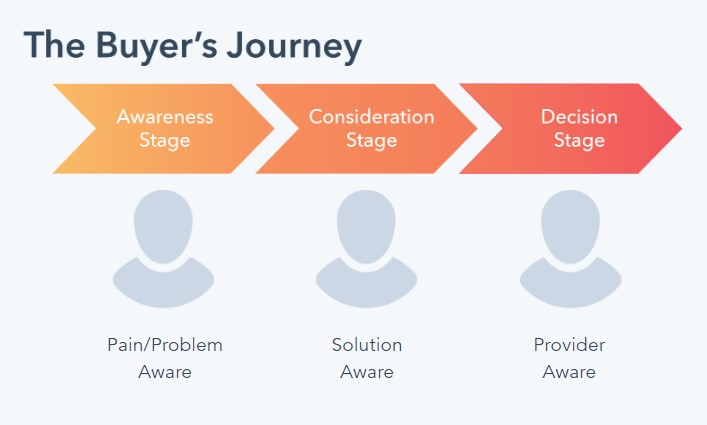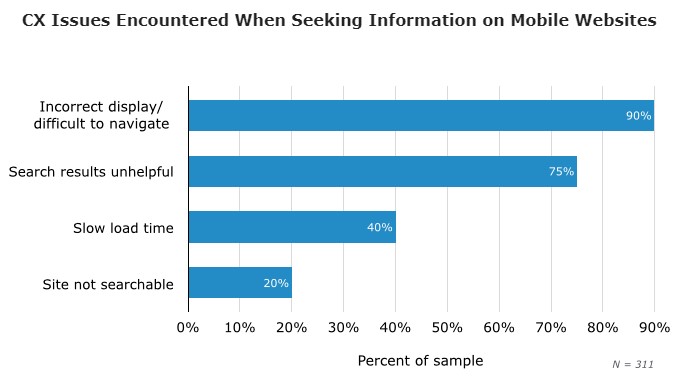User experience (UX) is one of the most important aspects of website design. Yet, it’s an afterthought for many businesses rather than a driving force for building a lead-generating machine. Website design for manufacturing businesses is no different.
According to Toptal, UX can offer businesses a significant return on investment. Good user experience depends on various factors, including functionality, speed, performance, clarity, desirability, structure, navigation, psychology, aesthetics, and more.
UX design is all about engaging users as effectively as possible. Making your website easy to use and navigate, mobile-friendly, enjoyable to explore, and helpful is necessary to create an outstanding user experience for visitors and returning customers.
Quick Takeaways:
- UX design is a process that involves facilitating outstanding experiences for website visitors.
- To design a manufacturing website successfully, start by conducting user research, then wireframe and prototype your site. Next, conduct user testing. Finish by developing and publishing your website.
- User experience best practices include adding straightforward navigation, making your site mobile-friendly, strategically placing CTAs, and logically organizing all content.
What is UX-Driven Website Design?
UX design is a process involving designing a website to facilitate an optimum user experience. Design the appearance, theme, navigation, and other essential website elements to lead users through a journey.
Your website should naturally guide visitors through each stage of the buyer’s journey.

UX design enhances the journey for anyone using your website. To build a successful website, understand your users and how they want to interact with your brand, website, products, and services. Good UX can lead to higher user satisfaction, ultimately leading to increased sales and revenue for your business.
How to Design Your Manufacturing Website for User Experience
Here are the core steps to design an optimal user experience for your visitors:
- Conduct in-depth user research. Learn about your target audience’s goals, personality, motivations, behaviors, challenges, and needs. Conduct interviews and surveys so you can create accurate buyer personas.
- Design a wireframe (diagram) of your website to nail down your site structure, navigation, and the flow from one page to the next.
- Develop a website prototype – similar to the first draft of a paper. It should represent your website in design form before the developers begin coding.
- Conduct user testing to work out kinks in the website design before creating the final version.
- Send your design to development. Then publish your finished website for the world to see.
9 UX Website Design Best Practices for Manufacturers
Follow these best practices for building a website that guides users smoothly down the sales funnel and naturally presents solutions to their problems.
1. Use Crystal-Clear Navigation
Poor navigation is the number one complaint of customers seeking support on mobile devices.

Your website navigation should be simple and easy to use. Try to keep your menu short so people can find what they’re looking for quickly. Your navigation menu should be in a prominent, conspicuous location, such as at the top of the page or directly underneath the splash image.
Follow these additional tips to make your site easy to navigate:
- Add navigation to the footer.
- Ensure your logo directs people back to the homepage.
- Keep your menus as simple as possible.
2. Tell People Who You Are Immediately
As soon as someone lands on your website, they should be able to tell who you are, what you do, and how you can help them solve a problem. Your message should resonate with your target audience by providing value while urging them to learn more.
3. Your Site Should Be Fast
Speed is one of the most important elements of good UX design. If your website takes too long to load, you’ll quickly lose people. Pages should take no longer than a few seconds to load for higher conversions and lower bounce rates.
4. Ensure It’s Also Mobile Friendly
Every business website today needs to be mobile-friendly. Not only will you resonate with more potential buyers, but you’ll rank higher in Google search results.
5. Empower People to Contact You Immediately
Make it as easy as possible for people to contact you for support. Consider a designated contact page, providing contact information on each main website page, and adding a chat box so users can find answers quickly.
6. Place Calls to Action (CTAs) Strategically
One of your biggest goals as a manufacturing company should be to get people to engage with your business. Adding strategic CTAs encourages users to take a specific action (e.g., fill out a form, learn more, or contact you.) In turn, this helps you generate leads and connect with users directly.
Ensure your CTA buttons and phrases are action-oriented and relevant to your target consumer. Be descriptive enough so people know what to do, but also be concise. CTAs should stand out. Try bolding text, changing font size, or using bright brand colors that catch the eye.
7. Organize Your Information Logically
Organize your content in the way visitors expect to find it. Highlight the most crucial information first, and use headings and subheadings to break up the remaining text. You can also establish hierarchy using graphics, color, and white space.
8. Images Should Be High Quality
Using high-quality images – like photos and graphics – can help you stand apart from competitors and catch the eye of potential customers. Use high-resolution images, but ensure they’re optimized for the web so that they don’t slow down your website.
9. Create a Clean, Aesthetically Pleasing Design
Pay attention to your font choices, images, colors, and other brand elements. Your website should look cohesive and attractive. Hiring a modern web design agency that understands the manufacturing industry and industrial website design is essential. Providing your audience with a clean website that’s fun to use can help you stand out from outdated competitors.
Website Design for Manufacturing
Shanahan focuses on helping manufacturers drive lasting results through digital marketing. We can help you build a website that acts as your 24/7 salesperson, bringing in traffic, leads, and sales so you can focus on other aspects of your business. Contact us today to learn more.

